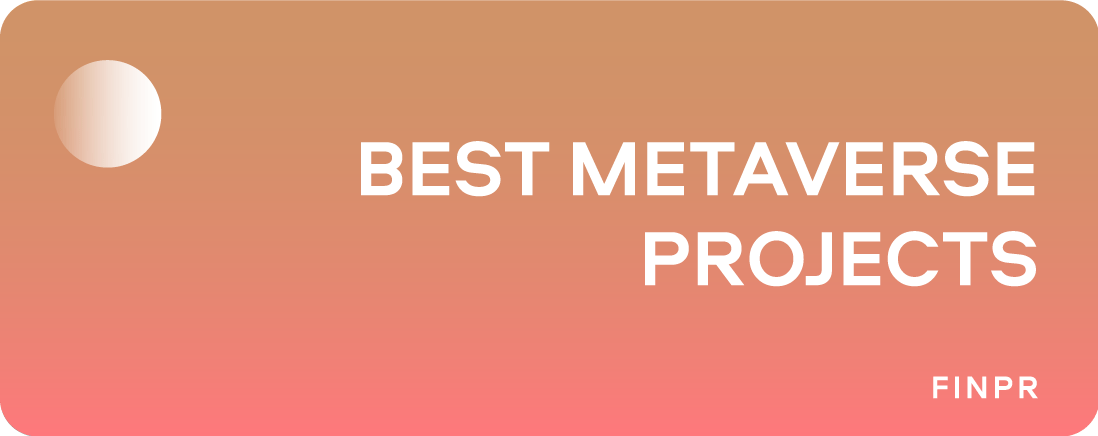
The metaverse is the walk-around internet. It's a shared set of 3D spaces that exist even when you're offline. Web3 gives you ownership. Your wallet is your passport. Tokens surround money and votes. NFTs contain your avatar's appearance, items, and land. You own them, not a server.
What's so special about 2025 in this arena? New things are coming: better social tools, better cycles, better rewards on the chain. AR and VR get better with lighter hardware and high-powered mixed reality on phones. L2 and appchains will reduce fees. Account abstraction makes it easier to log in. Interop standards spread, so assets move across games without a mess. Creator tools are improving, thus small teams are creating more content.
This article highlights projects that are significant in 2025 for building world, community energy, and a healthy economy. We picked teams with live roadmaps, mature tech, and growing player bases.
Top 12 Metaverse Projects Worth Watching
1. Decentraland

Decentraland is one of the first and most well-established metaverse projects built on the Ethereum blockchain. It offers users complete ownership of digital land and assets through NFTs, allowing them to create, trade, and monetize virtual experiences. Decentraland operates as a decentralized virtual world where players, businesses, and creators interact without a central authority. The platform has hosted major events, including virtual fashion weeks, real estate summits, and NFT exhibitions, making it a leader in digital property ownership and branded experiences.
One of the main attractions of Decentraland is its vibrant economy. Users can purchase virtual plots of land, develop interactive experiences, or rent spaces for advertising and social events. The in-game currency, MANA, is used for transactions, including buying wearables, NFT art, and other virtual assets. As major brands and organizations continue to establish their presence in Decentraland, it remains a dominant player in the metaverse industry.
- Token: MANA
- Market Cap (2025): about $670M
- Blockchain: Ethereum with Polygon for transactions
- Main Use Case: pen virtual world with land, wearables, events
- Key Features: NFT land ownership, creator tools, DAO
- 2025 Highlights: Metaverse Fashion Week 2025 and Art Week 2025
2. The Sandbox (SAND)

The Sandbox is a blockchain-based metaverse project that emphasizes user-generated content and play-to-earn (P2E) mechanics. Unlike centralized virtual worlds, The Sandbox empowers players and businesses to create, own, and monetize their gaming experiences through NFTs. Built on the Ethereum blockchain, the project allows users to purchase LAND parcels, which can be developed into games, social hubs, or business venues.
A major aspect of The Sandbox’s success is its partnerships with globally recognized brands such as Adidas, Snoop Dogg, The Walking Dead, and Warner Music Group. These collaborations attract mainstream audiences, merging entertainment and blockchain technology. The in-game currency, SAND, facilitates transactions, governance, and staking rewards. With a strong focus on community-driven development, The Sandbox continues to push the boundaries of the metaverse economy.
- Token: SAND
- Market Cap (2025): about $742M
- Blockchain: Ethereum (with Polygon support; team also teased own chain work)
- Main Use Case: UGC worlds, brand hubs, playable seasons
- Key Features: LAND NFTs, creator tools, brand partnerships
- 2025 Highlights: Alpha Season 6 with Cirque du Soleil and 250k SAND rewards
3. Otherside (Bored Ape Yacht Club)

Otherside is the metaverse expansion of the hugely successful Bored Ape Yacht Club (BAYC) NFT collection, developed by Yuga Labs. Unlike traditional virtual worlds, Otherside integrates NFT ownership directly into the game, allowing holders of Bored Apes, Mutant Apes, and other NFT collections to use their assets within the metaverse. This project aims to create a fully immersive, interoperable world where NFT holders can explore, socialize, and build experiences together.
What sets Otherside apart is its real-time, large-scale multiplayer interaction capabilities, powered by Improbable’s M² technology. This enables thousands of players to interact in a high-fidelity 3D environment without the typical lag found in traditional online games. With backing from some of the biggest players in Web3, including Animoca Brands and Andreessen Horowitz, Otherside is positioned to redefine how NFTs are integrated into the metaverse.
- Token: ApeCoin (APE)
- Market Cap (2025): about $520M
- Blockchain: Ethereum
- Main Use Case: Large-scale multiplayer world with NFT avatars
- Key Features: 3D models for BAYC/MAYC/BAKC/CryptoPunks, ODK for creators
- 2025 Highlights: “Outbreak” open beta in Otherside and refocus on Otherside + BAYC
4. Axie Infinity (AXS)

Axie Infinity is a blockchain-based game that popularized the P2E model, allowing players to earn real-world income by battling, breeding, and trading digital creatures called Axies. Developed by Sky Mavis and powered by the Ronin blockchain, Axie Infinity created an entire in-game economy that attracted millions of users, particularly in regions where players could earn more than traditional wages.
Despite facing economic challenges due to the fluctuating value of its AXS and SLP tokens, Axie Infinity remains a dominant force in blockchain gaming. The game’s metaverse expansion, "Axie Infinity: Origin", introduces new mechanics, improving accessibility and sustainability. Axie’s innovative approach has inspired numerous other blockchain games, solidifying its role as a pioneer in NFT-based gaming.
- Token: AXS
- Market Cap (2025): about $377M
- Blockchain: Ronin (app-chain by Sky Mavis)
- Main Use Case: Creature battler with play-to-own economy
- Key Features: Seasons, tournaments, marketplace, Ronin wallet
- 2025 Highlights: Origins Season 14 with 80k AXS prizes; Elite 4 postseason on Oct 5; Ronin grants and growth
5. Meta’s Horizon Worlds

Meta (formerly Facebook) has positioned itself as a key player in the Metaverse space with Horizon Worlds, a social VR platform designed for exploration, gaming, and remote collaboration. Unlike decentralized metaverse projects, Horizon Worlds is a centralized ecosystem where users create, interact, and socialize in immersive VR environments using Meta’s Quest headsets.
While Meta has faced criticism regarding accessibility, high hardware costs, and early-stage development limitations, it remains one of the most ambitious metaverse projects due to the company’s massive investment in AI, VR, and AR technologies. With continuous updates and improvements, Meta aims to establish Horizon Worlds as a dominant force in the social and business aspects of the Metaverse.
- Token: -
- Market Cap (2025): -
- Blockchain: Centralized platform by Meta
- Main Use Case: Social VR creation and hangouts for Quest and mobile
- Key Features: New Horizon Engine for bigger worlds, higher player counts, faster loads
- 2025 Highlights: Horizon Engine announced at Meta Connect 2025
6. Roblox

Roblox is a widely popular online platform that allows users to create, share, and play games created by other users. Unlike traditional games, Roblox provides a suite of development tools that enable creators to design immersive experiences, fostering a vast ecosystem of user-generated content. This approach has led to a diverse array of games and social experiences, attracting millions of active users worldwide.
The platform's in-game currency, Robux, facilitates transactions within the ecosystem, allowing players to purchase items, accessories, and access premium content. Developers can monetize their creations, earning Robux that can be exchanged for real-world currency, thereby incentivizing innovation and creativity. Roblox's emphasis on community-driven content and its accessible development environment have solidified its position as a leader in the metaverse space.
- Token: Robux (in-game currency, not crypto)
- Market Cap (2025): -
- Blockchain: Centralized UGC platform
- Main Use Case: Create and play UGC “experiences,” live economy for devs
- Key Features: Immersive ads, rewarded video ads, strong creator payouts
- 2025 Highlights: Q2 2025 bookings $1.44B and raised full-year outlook; record DAU growth
7. Star Atlas

Star Atlas is an ambitious metaverse project that combines blockchain technology with a grand strategy space exploration game. Set in a futuristic science fiction universe, players can explore galaxies, engage in space combat, and establish interstellar alliances. The game leverages the Solana blockchain to offer a decentralized and scalable gaming experience.
In Star Atlas, in-game assets such as spacecraft, space stations, and land are represented as NFTs, providing players with true ownership and the ability to trade these assets in a decentralized marketplace. The integration of a play-to-earn model allows players to earn tokens through gameplay, which can be used within the game or traded on external exchanges. Star Atlas aims to create a fully immersive and economically complex virtual universe.
- Token: ATLAS
- Market Cap (2025): about $17M
- Blockchain: Solana
- Main Use Case: Space MMO with on-chain assets and markets
- Key Features: NFT ships and land, marketplace, real-time gameplay tied to Solana
- 2025 Highlights: Ongoing content drops and community events; token remains liquid on CEX/DEX
8. Enjin

Enjin is a blockchain-based platform that provides tools and services for creating, managing, and integrating NFTs into virtual worlds and gaming environments. By offering a comprehensive suite of development tools, Enjin enables developers to incorporate blockchain assets into their games and applications seamlessly.
The platform's native token, ENJ, is used to back the value of NFTs minted within the ecosystem, providing intrinsic value to digital assets. This approach ensures scarcity and enhances the perceived worth of in-game items. Enjin's focus on simplifying the integration of blockchain technology into gaming has made it a prominent player in the metaverse development space.
- Token: ENJ
- Market Cap (2025): about $118M
- Blockchain: Enjin Blockchain (Substrate-based), with ecosystem tools and wallet
- Main Use Case: NFT and game asset tooling, wallet, marketplace
- Key Features: Enjin Beam QR drops, staking dashboard on NFT.io, cross-chain plans
- 2025 Highlights: Matrixchain integration work, staking dashboard launch, Hyperbridge roadmap for Q4
9. Somnium Space

Somnium Space is a VR metaverse built on the Ethereum blockchain, offering a fully immersive 3D world where users can purchase land, build structures, and engage in social experiences. The platform supports VR headsets, providing a heightened sense of presence and immersion for its users.
Land parcels in Somnium Space are represented as NFTs, granting users ownership and the ability to monetize their virtual real estate. The platform also features a marketplace for trading digital assets, including avatars, wearables, and virtual goods. Somnium Space's commitment to VR integration and user-generated content positions it as a unique and engaging metaverse project.
- Token: CUBE
- Market Cap (2025): about $4.9M
- Blockchain: Ethereum
- Main Use Case: VR world with land, avatars, and creator tools
- Key Features: VR support, land NFTs, Unity-based SDK for custom worlds
- 2025 Highlights: Ongoing SDK and Worlds updates; active CUBE markets referenced on major trackers
10. Illuvium
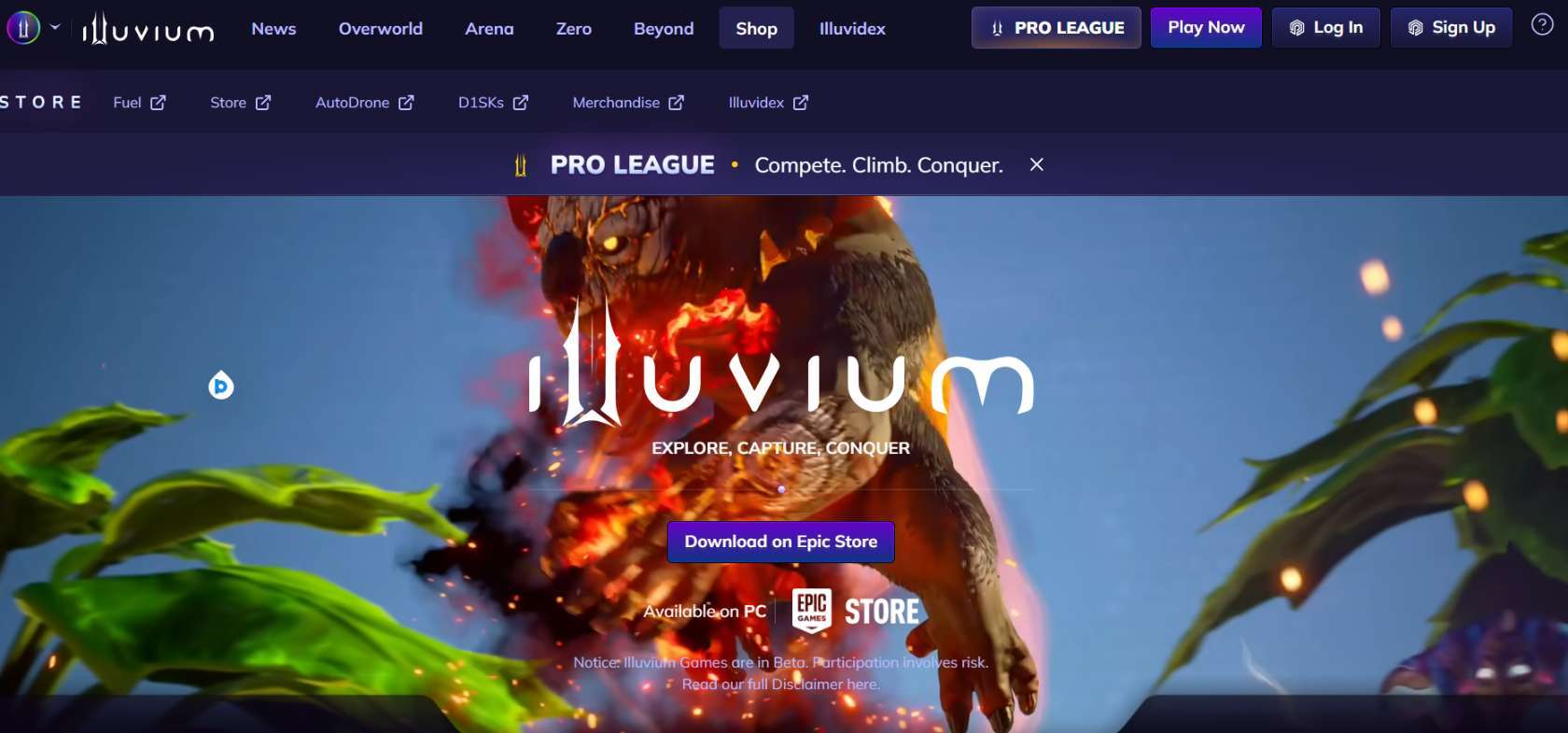
Illuvium features a networked game world on Immutable's stack, with Arena, Overworld, Zero, and Beyond networked and tradable on IlluviDex. Open beta arrived on the Epic Games Store in July 2024, and 2025 featured frequent patches along with an "MMO-lite" push for Overworld. The project is transitioning from the legacy Immutable X architecture to Immutable zkEVM, while preserving Ethereum security and saving NFTs and on-chain actions.
In practice, Arena is the autobattler, Overworld is the open-world hunt, and Zero is the land sim that powers the rest. The team put out a number of 2025 updates and balance passes for Arena, while keeping the roadmap going for all modes. Land sales before this passed 20,000 plots by Immutable's recap.
- Token: ILV
- Market Cap (2025): about $145M
- Blockchain: Immutable zkEVM on Ethereum
- Main Use Case: Open-world creature RPG with Arena and city-builder modes.
- Key Features: Free-to-play, Immutable Passport login, NFTs across Overworld/Arena/Zero.
- 2025 Highlights: Pro League 2025 season running Aug–Dec with prize events; open beta feature rollout
11. Bloktopia
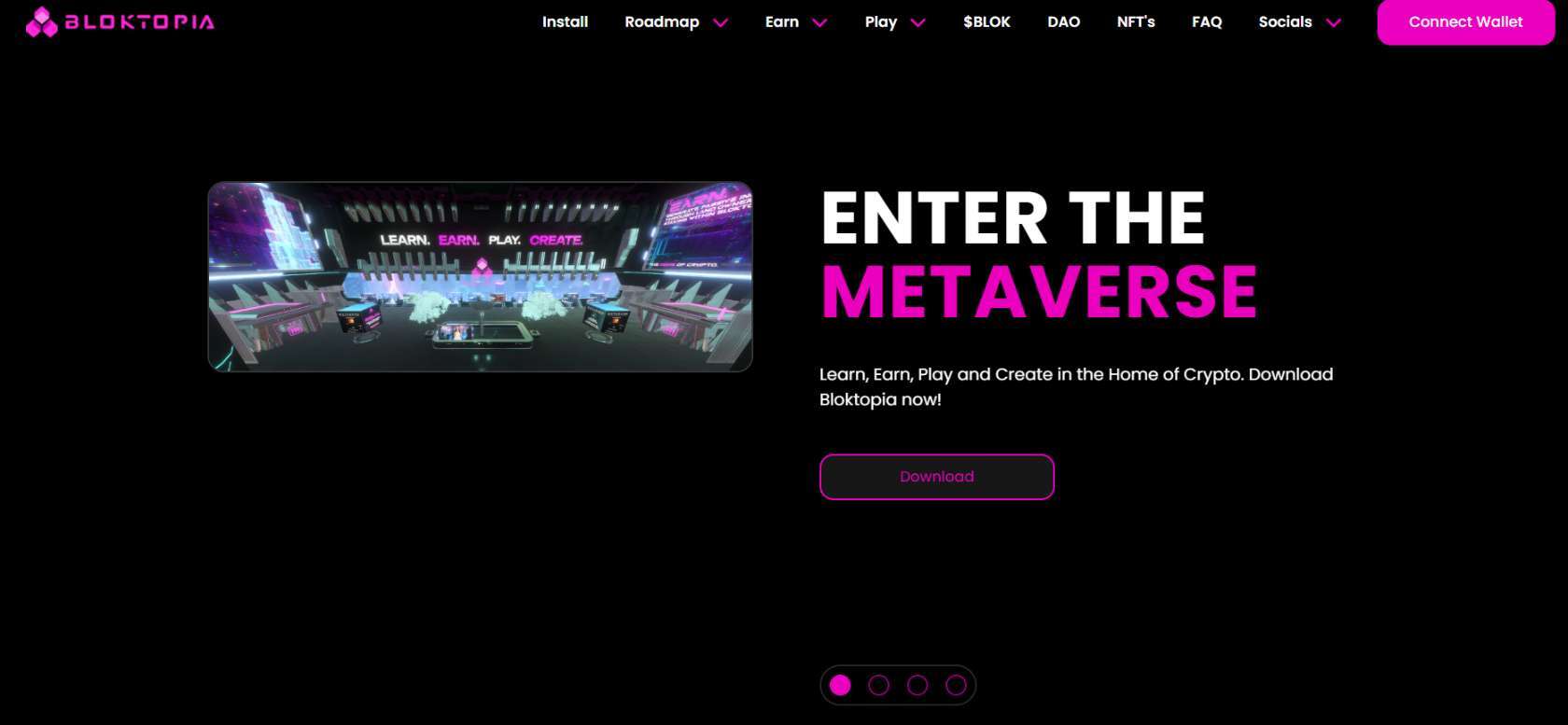
Bloktopia is a 21-level Polygon-based VR skyscraper. It is built on Unity and serves as a gateway to crypto content, mini-games, events, and branded areas. BLOK is the token that powers access and commerce in the world.
Land is sold as REBLOK NFTs and ad space as ADBLOK, both purchasable with BLOK. Anchor tenants from well-known crypto exchanges and brands have been solicited by the team for years, and its documents define joint and sole ownership plans for plots.
- Token: BLOK
- Market Cap (2025): about $5.0M
- Blockchain: Multichain token live on BSC, Polygon, and Arbitrum
- Main Use Case: VR skyscraper hub with virtual real estate, learning, social, and ads
- Key Features: 21-level world, property NFTs, staking, events
- 2025 Highlights: Public 2025 roadmap posts and social updates teasing new zones, BLOK Games, BLOK Party
12. Alien Worlds
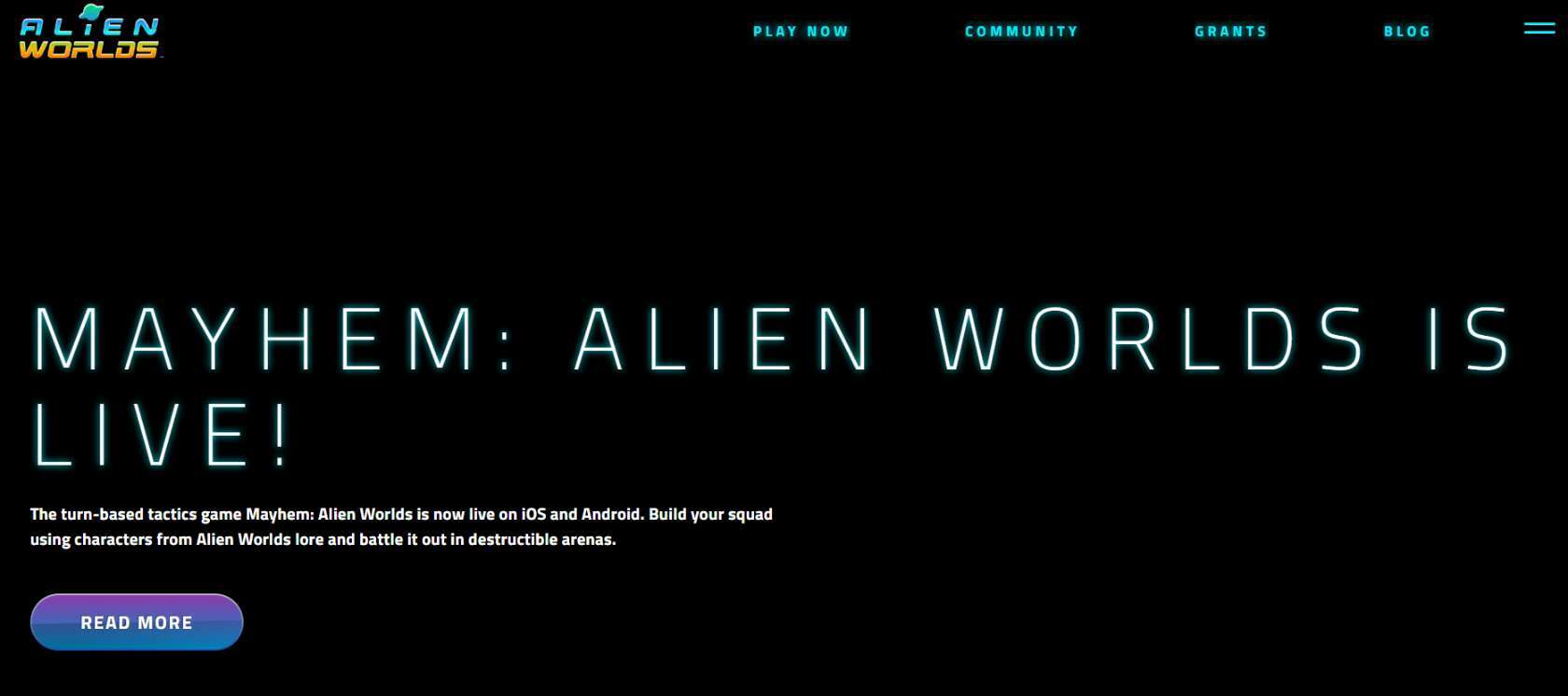
Alien Worlds includes WAX and BNB Chain. Players dig TLM, collect tool and land NFTs, and engage in Planetary Syndicates that are DAOs with voting and treasury management. The official docs and tech blueprint specify the cross-chain architecture and the governance loop.
New developments keep the game fresh: the Outpost brought Series 2 tool NFTs, and the community dashboards still show strong daily users according to DappRadar rankings. In 2025, Union and Planet DAOs gained more control over reward routing, whereby planets can fund games and events in the meta-economy.
- Token: TLM
- Market Cap (2025): about $27M
- Blockchain: Cross-chain across WAX, BNB Chain, and Ethereum
- Main Use Case: P2E mining, missions, and DAO-driven planet games
- Key Features: Planetary DAOs, NFT tools and land, tournaments and community games
- 2025 Highlights: Q1–Q3 updates on tournaments and community titles; Union/Planetary DAO reward-routing update live in May 2025
3 Best Upcoming Metaverse Projects to Watch
1. Pikamoon
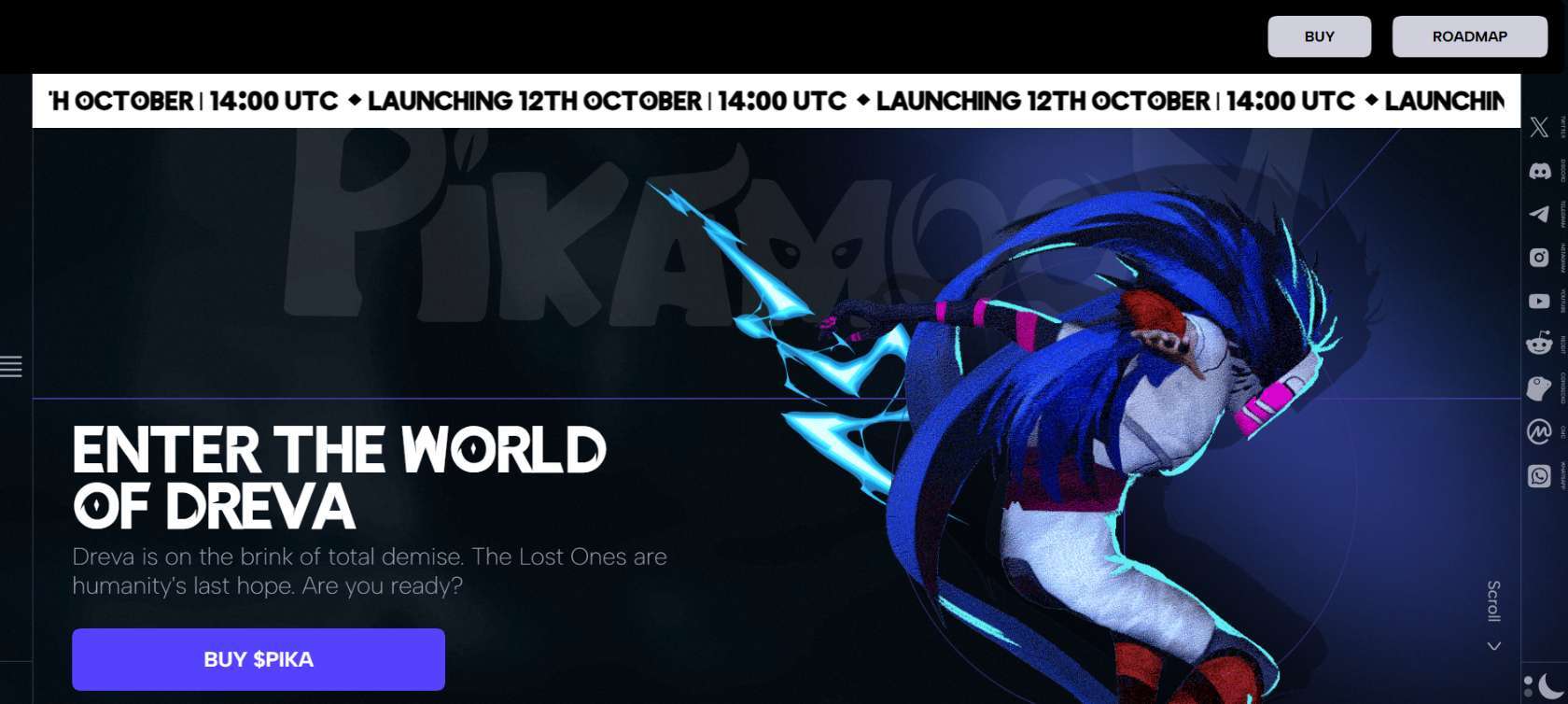
Pikamoon positions itself as a PvP and RPG hybrid set in Dreva, an NFT character and PIKA token economy. The project relocated from its initial configuration and moved to Solana in late September 2025, lowering total supply to 44B PIKA, and continues to gesture toward arena fighting alongside a broader adventure loop. If you want a quick sampling, the listings and docs outline modes, rewards, and how PIKA is used in upgrades and store buys.
2. Parallel Colony
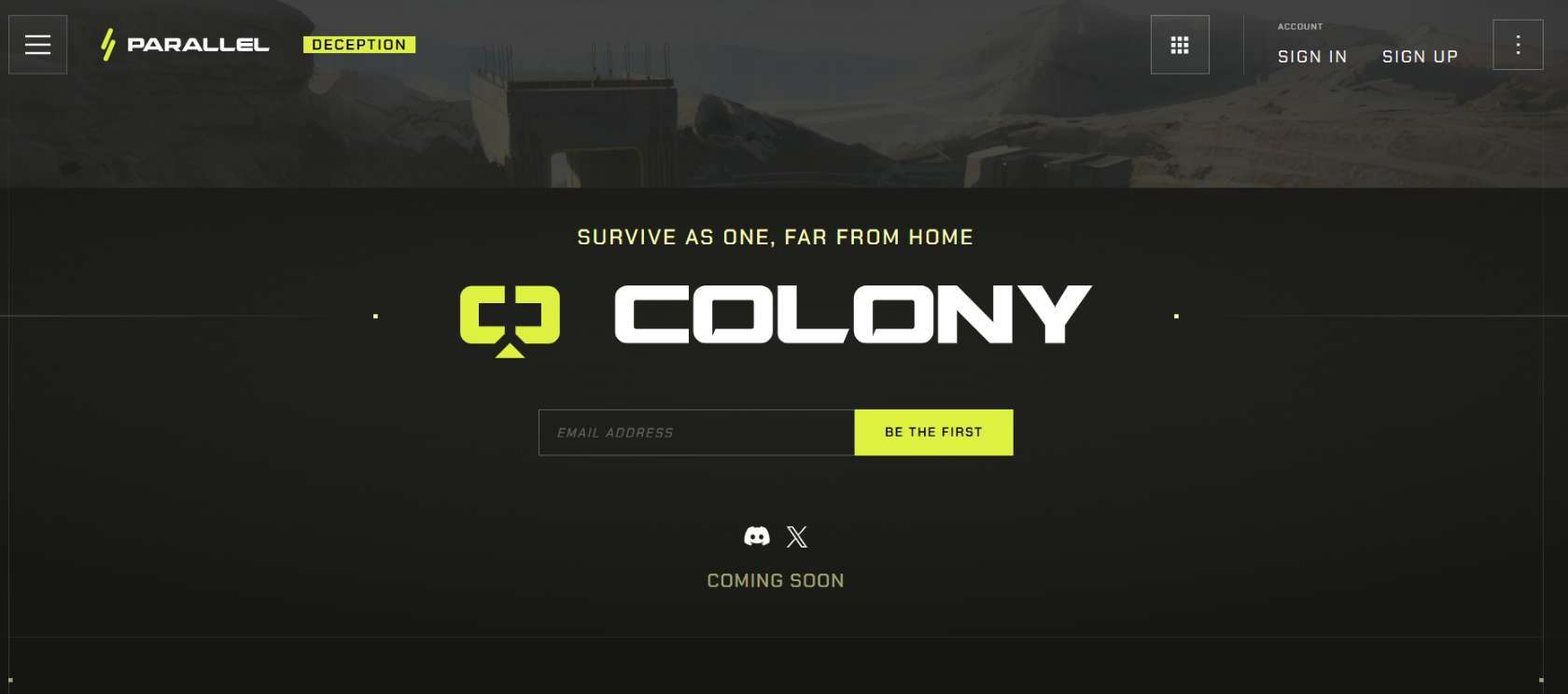
Parallel Studios' Colony is an on-chain survival sim focused on AI agents and real item extraction. Early Alpha went live on September 22, 2025, and it's currently limited to the Solana Seeker phone while the team releases features like AI Pings, NPC recruitment, and on-chain looting, with open alpha targeted before year's end.
3. EarthMeta
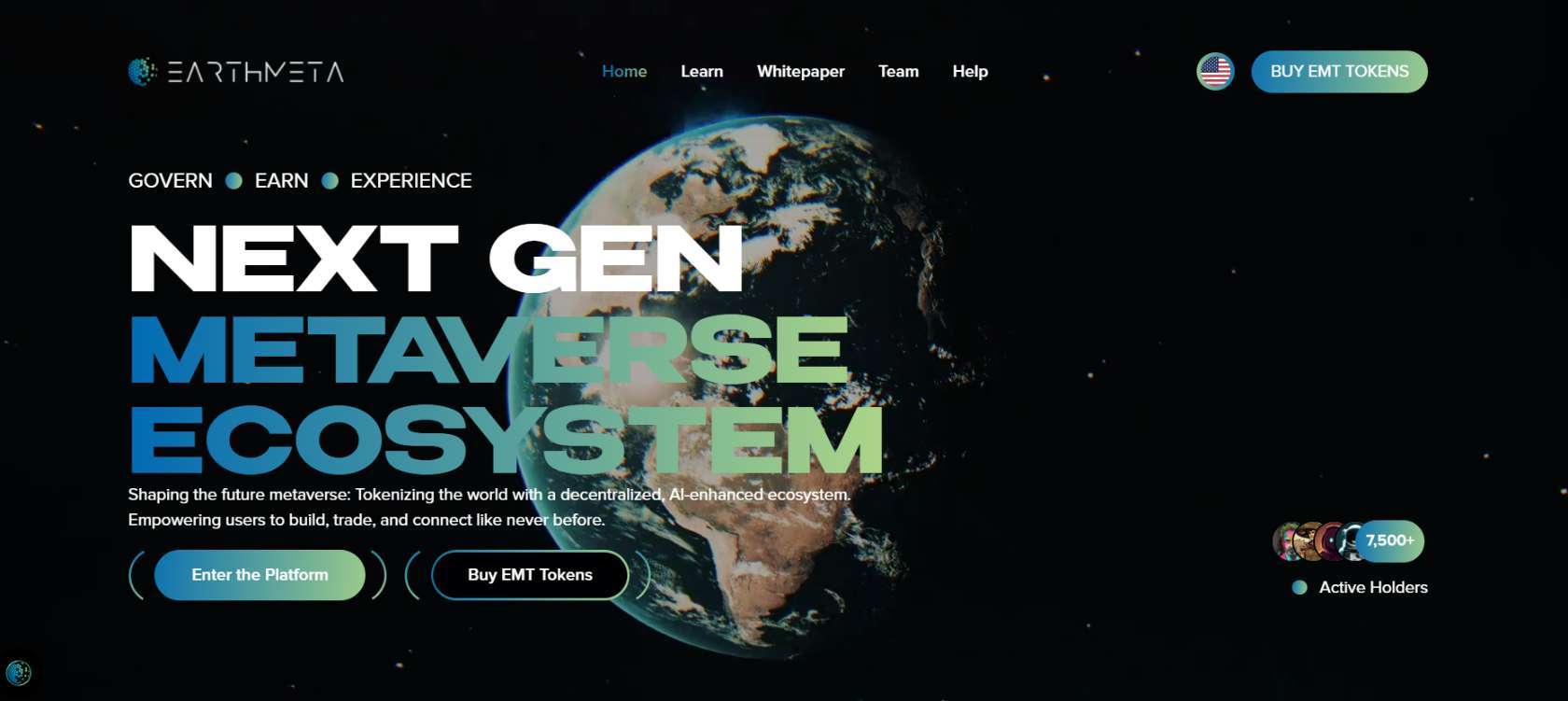
EarthMeta offers a "digital twin of Earth" where users buy city-level land NFTs, run them as Governors, and earn a percentage of transaction fees, with the top holders in a country becoming Presidents with a further percentage. The site and recent media releases suggest that it is on Polygon, uses DAO voting for key decisions, and spends a small percentage of fees on charity.
What We Score
How to Invest in Metaverse Projects Safely
Step 1 – Get your risk rules sorted first
- Select a limit per project and stick to it. Many of us take 1–3% portfolio per name.
- Use DCA for entries. Varies over time and significant updates.
- Select exits before buying. Target prices, lock-in dates, feature releases, or an explicit "I was wrong" line.
Step 2 – Understand the token and NFT maths
- FDV vs users and revenue. When value fully diluted goes crazy and revenue is tiny, brake.
- Unlock schedule. Graph cliff dates, investor and team releases, ecosystem grants.
- Sinks and sources. How the token gets spent, burned, received. Same with NFTs – mints, upgrades, sinks.
- Holder spread. Look at top wallets. If 5 hold half the supply, that's a risk.
Step 3 – Audit the product
- Play the build. Track load time, bugs, session length, repeat play.
- Live ops. Are quests, seasons, UGC tools, leaderboards, and tournaments present?
- Metrics that matter: 7-day retention, daily active users, revenue mix, marketplace volume, order book depth on NFTs.
- Roadmap reality. Look for milestones shipped in the last 6–12 months, not slides.
Step 4 – Check the team and partners
- Team history in games, social apps, or crypto. Public profiles and past launches are helpful.
- Funding and runway. Who, when, and how much is still a mystery.
- Publishing stack. Engine, chain, wallets, marketplace partners, anti-cheat. Fewer single points of failure is better.
Step 5 – Security and contracts
- Smart contract audits from reputable firms. Read the findings summary.
- Admin keys and upgrade rights. Is it a multisig with named signers?
- Bridges and oracles in use. More moving pieces add risk.
- Bug bounty live and funded.
Step 6 – Liquidity and trading hygiene
- Where it lists. CEX listings, DEX pairs, and actual liquidity on both.
- Slippage test. Attempt a buy and a sell with your planned size.
- NFT side. Floor depth, unique owners, recent sales, wash-trade screens.
Step 7 – Legal and region fundamentals
- Terms of service and token/NFT terms. Look for IP rights, refund terms, region blocks.
- KYC for marketplace payouts if you plan selling UGC or running a shop.
- Taxes. Monitor cost basis and sales. Use a crypto tax tool day one.
Step 8 – Hardware and platform risk
- If a project depends on one headset or OS, that's concentration risk.
- Verify mobile and desktop support. Broader access generally means more stable use.
Step 9 – Community signal over noise
- Discord and X quality. Fewer bots, more build updates, open mod rules.
- Creator payout stories. Real users being paid real money is a healthy sign.
- Feedback loop. Do devs roll out resolutions from public tickets?
Choosing the Best Metaverse Projects in 2025: Key Criteria
We grade metaverse projects the same we grade any live product with on-chain money on the line.
Our quick-glance scorecard
We use 100 points. Each project gets a total, then we rank.
- Product feel and quality - 20%
We measure time to first action under 5 minutes: UI clarity, tutorial flow, load times, netcode, bug rate, PC, mobile, and VR support. If it stutters or crashes, we cut points.
- Traction and stickiness - 20%
90-day active user and active wallet trend. Day-7 and Day-30 return rate. Peak and mean concurrency. Weekly creator activity. Marketplace GMV and buyer volume, not just trades by the same small group of wallets.
- Economy strength - 20%
On-chain earnings and fees. Ratio of earnings from recurring items or passes vs single land drops, buyer to payer ratio, supply and sinks within the game loop. High spend without inflationary spam receives high marks.
- Token and NFT design - 15%
Supply schedule. Unlock map by month. Fully diluted value vs 90-day revenue and users, liquidity depth on CEX and DEX, holder spread. If staking rewards come from real fees, okay. If pure emissions, we subtract it.
- Team and shipping tempo - 10%
Track record in games or engines. Public roadmap vs delivery. Patch cadence, funding and runway in months. On-time shipping studios get higher ratings.
- Community and trust - 10%
Mod quality, clear rules, public dashboards, open dev blogs, participatory governance and real debate, response time on support. If hard questions become banned on Discord, we see.
- IP, brands, and events with utility - 5%
Rights which actually show up in game. Concerts, esports, or retail rewards that actually do something. No credit for logo swaps.
Data we used
- Live playtesting by us on PC, phone, and VR.
- Public dashboards.
- On-chain token and NFT information.
- Exchange books and DEX depth in place of trade size checks.
Instant no list
We cut or drop rank if we see:
- No playable build.
- Wash trading or fake volume.
- Hidden or changing supply.
- Admin keys which mint or freeze with no guardrails.
- Roadmaps that shift each month with no shipped.
Current Challenges and Future Outlook of the Metaverse Industry
Overcoming Obstacles
Let's get real. The initial vision of one vast, overarching virtual world in which we'd all live our digital lives didn't materialize as quickly as some predicted.
The hype a few years ago has dissipated, but that doesn't mean the metaverse has vanished. Rather, it's been growing up quietly, finding its footing by solving real issues in the world more than just chasing entertainment.
This shift brings its own set of growing pains. The challenges today are less regarding flashy graphics and more regarding the nuts-and-bolts work of building a solid, sound foundation.
- Privacy and Security Issues: When you enter an immersive 3D environment, the amount of data being collected is vast. It goes far beyond simple browsing history to include performance data along with sensitive biometric data like where your eyes are moving or your voice. Training exercises in law enforcement or medicine can involve very sensitive information, particularly if they are based on real occurrences. That's a big target for cyberattacks, and a data breach would expose very personal information.
- The High Cost of Entry: Building and accessing premium metaverse experiences is expensive. For organizations, the development of custom virtual worlds or digital twins requires substantial investment in technology and specialist talent. For individuals, the need for high-spec VR/AR headsets and high-speed internet can prove a considerable barrier, stalling mass adoption. This cost poses a real risk of a digital divide, where participation is limited to the wealthiest individuals and organizations.
- Isolated Digital Islands: Among the largest obstacles is the lack of common standards. Think about it: you can't just take your avatar or digital good bought on one platform, like Decentraland, and bring it into another, like Meta's Horizon Worlds. Virtual worlds are typically "walled gardens", which fragments user experience and reduces the possibility of an integrated metaverse.
- Real-World Reliability: In high-stakes professional training, one of the key questions is what if virtual training is not accurate? If a surgeon or police officer trains on a faulty simulation, it can mean making errors in the real world. This creates challenging liability issues. Those adopting these tools must understand that virtual training is a valuable supplement, but not a full replacement for real-world practice and reflective analysis.
- Building Trust and Safety: Even in workplace settings, content moderation is necessary. Realistic virtual imagery can potentially invoke trauma responses, and concerns about harassment in virtual spaces persist. Building user trust also means dispelling skepticism about the metaverse's long-term value and ensuring transactions and interactions are secure and genuine.
A Pragmatic and Hopeful Future
The future of the metaverse looks less like a sci-fi movie and more like a solid, invisible layer enhancing our physical life. The focus is shifting dramatically to practical, industrial, and enterprise use cases that deliver measurable value.
The numbers tell a compelling story of confidence. The global metaverse market is on a sound growth trajectory, with estimates stretching into trillions of dollars by 2030.
This growth will be fueled by some significant transformations that we are already starting to see:
- Enterprises Will Lead the Way: The most transformative growth is taking place behind the scenes at companies. Businesses are using the metaverse for incredible gains in productivity. For example, jet engine makers use virtual simulations to see how a part performs at 80,000 feet or in an electrical storm, something that cannot be done in the real world. In healthcare, instruments like Osso VR are helping to teach surgeons new techniques, with users performing up to three times better than students taught with traditional methods.
- Hardware Gets Smarter and Lighter: The clunky, insulating headsets of old are receding. The market is shifting to more socially acceptable and versatile hardware, especially optical see-through smart glasses. Over twice the sales of AI-powered smart glasses occurred in the first half of 2025, with brands like the Ray-Ban Meta glasses selling in millions. This trend for lighter, more integrated wearable technology will be critical for all-day use in field service, logistics, and engineering.
- AI Is the Invisible Engine: Artificial Intelligence is the magic that will both make the metaverse feel alive and personalized. AI powers the intelligent avatars and virtual assistants you engage with. It also enables procedural generation, which allows developers to automatically create massive and unique digital worlds, allowing world-building to be more efficient and cost-effective. This back-end AI will also make experiences more responsive and interactive.
- Brands Find New Ways to Interact: Marketing in the metaverse is past the experimental phase now. Brands that are innovative are discovering innovative ways of building community and interaction. We see brands like Gucci allowing users to dress up their avatars in virtual fashion, and Nike launching immersive virtual stores for its products.
Concluding Remarks
The metaverse is rapidly becoming a dynamic digital economy that is reshaping how people work, play, and connect. The rise of virtual real estate, NFT-powered economies, play-to-earn gaming, and digital commerce is already proving that the metaverse is a lucrative space for businesses and creators alike.
The metaverse is still in its early stages, but its impact on gaming, entertainment, social networking, education, and business is undeniable. As technology continues to evolve, the metaverse will become an integral part of our digital lives — blurring the line between the physical and virtual worlds.




